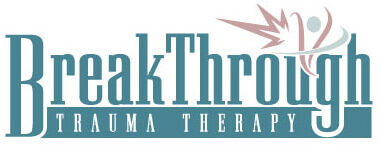Have you ever seen a loved one in an abusive relationship and wondered why they did not want to leave, although they could walk out at any point? In a nutshell, that is a trauma bond. It is a critical part of abusive relationships.
What is a Trauma Bond?
A trauma bond is an unhealthy emotional attachment between an  abuser and their recipient in a relationship with a cyclical pattern of abuse. The person receiving the cycle of abuse develops a need for validation from the abuser, while the consequential psychological attachment compels them to stay in the relationship. They sympathize and justify the abuse, despite the hurt and damage to their physical and mental health.
abuser and their recipient in a relationship with a cyclical pattern of abuse. The person receiving the cycle of abuse develops a need for validation from the abuser, while the consequential psychological attachment compels them to stay in the relationship. They sympathize and justify the abuse, despite the hurt and damage to their physical and mental health.
Recipients of abuse with trauma bond also find it hard to leave the abusive relationship. They derive an identity from the situation. Therefore, they voluntarily stay and develop maladaptive patterns toward the abuse and abuser. The resultant psychological anomaly makes them abuse their love language to the extent that they consider their liberators the oppressors.
A trauma bond is unilateral. It only develops in the recipient, not the perpetrator. The person on the receiving end bears the burden of abuse and sustains the relationship. Although the recipient has a subservient role in this unhealthy attachment, they unknowingly become enablers, empowering the abuser’s vices.
How Trauma Bonds Develop
Trauma bonds form from patterns of abuse in relationships. It does not come out of one incident of abuse. The abuse can be physical, emotional, sexual, psychological, verbal, financial, or spiritual. After every abusive episode, there is intermittent positive reinforcement through rewards or punishments.
The recipient of abuse does not willfully commit to the relationship. They get conditioned into developing a bond through repeated exposure to abuse and the accompanying positive reinforcement. Basically, the abuser trains the person on the receiving end to be obedient to their demands.
The remorseful period strengthens the bond and masks the vileness of the abuse. Unfortunately, it also evokes a form of neediness that only the abuser can quench in the recipient. The bond strengthens with every episode of abuse and reinforcement, making it difficult for the recipient to break from the abuser’s chock hold.
Trauma bonding can happen to anyone. It can be between colleagues, marriage partners, siblings, platonic friendships, parent and child, or neighbors. Recipients of abuse have the potential to develop a traumatic bond with their abuser.
The risk factors increase if the person receiving the abuse has:
- Poor mental health – conditioning by the abuser gets easily achieved because the person has thought and emotional dysregulation.
- Poor self-image – if you do not know your worth, it becomes easy for someone to define it for you.
- Financial difficulties – dependency gives power to the sustainer, and the borrower is always a servant to the lender.
- Lack of a support system – it becomes easier to tolerate abuse if you have no one to help. The abuser quickly becomes a place of solace.
- Past trauma – unresolved trauma can become familiar. People subconsciously choose it from different abusers. A child abused by their father has a higher risk of ending up with an abusive partner because that form of trauma is normal to them or even expected.
- Identity issues – it is easy to condition someone who does not know themselves.
Stages of Trauma Bonding
A trauma bond develops gradually through a conditioning process by the abuser. It takes seven stages of manipulative techniques to mature the trauma bond. Through that period, the abuse recipient is completely unaware of the silent grooming.
The Love Bombing Stage
At the beginning of the abusive relationship, the abuser shows intense feelings, and the relationship experiences are euphoric. The love, affection, gifts, and attention showered by the abuser can become overwhelming. It feels too good to be true.
When a relationship is relatively new, gifts and grander love gestures elicit reciprocation in equal measure. The recipient feels guilty and inadequate quickly enough if they cannot meet the set standards. Unfortunately, the love bombing phase has a short life span.
Trust and Dependency
 In this phase, the abuser does everything to win the recipient’s trust. The two become inseparable. They condition their victim to look to them for love and validation. The abuser may rush the victim into commitment, make promises, and have the victim building castles in the air. Their gestures begin to build a level of dependency on the victim.
In this phase, the abuser does everything to win the recipient’s trust. The two become inseparable. They condition their victim to look to them for love and validation. The abuser may rush the victim into commitment, make promises, and have the victim building castles in the air. Their gestures begin to build a level of dependency on the victim.
The victim’s attachment to the abuser grows strong at this stage. As the abuser notices the increasing satisfaction and comfort, they begin to pull away. However, their distancing is a test to see how hooked the victim is to their whims. Craving the abuser’s love and validation at this point shows the trauma bond is already alive and active.
Criticism and Devaluation
The criticism stage starts subtly – the recipient of the abuse may not even notice when they begin. It comes off as snarky comments on the victim’s dressings, actions, or blaming and shaming – the abuser looks for opportunities to belittle you and make you uncomfortable. The nitpicking is a means to guilt-trip you into submission. In doing so, the abuser is getting more for themselves while breaking you at the same time and breaking you.
Before the victim knows it, self-doubt creeps in. They begin to crave the abuser’s validation because their insecurities are surfacing. The abuser makes the praises scarce and manipulates the victim more. They make their assurance and comfort elusive as the victim yearns to find security for their dwindling worth.
As abuser proceeds to the devaluation stage, they become more demanding. Anything you do at this phase is repulsive and unsatisfying. Nothing is good enough. The dynamics change at this point. It becomes the victim’s turn to praise, chase, and exalt the abuser.
Gaslighting
At this stage, the abuser denies and invalidates the abuse recipient’s feelings and experiences. The abuse perpetrator makes the victim doubt their perception and bullies the victim into believing their narrative. They become their victim’s voice of reason and discourage other alternative schools of thought. As the primary confidant, the abuser spins the narrative to suit their agenda until the recipient cannot differentiate facts from reality.
The recipient of the abuse begins to question their beliefs, reasoning, outlook, and judgment. They align their truths to the abuser’s and work to please their new master. Unfortunately, the abuse is not direct at this point. The abuser knows the level of trust the victim has and uses it to their advantage.
At this point, the abuser has already isolated the victim from any support system. The abuse perpetrator continues to poison the victim’s mind and tear down their defense system. What they say they feel about the victim does not resonate with their action.
Resignation and Submission
Any attempt by the recipient of abuse to fight back and object gets met with resistance and manipulation. The abuser stirs a storm that is mentally and physically exhausting to fight. It becomes easy to say yes at this point to avoid unnecessary conflicts.
The abuser gladly takes the lead. The recipient’s resignation empowers the perpetrator to continue disrespecting their victim’s boundaries without any repercussions.
Loss of Self
The recipient of abuse begins to settle for anything at this stage for the sake of peace. The abuse gets worse every time they put up a fight. The abuser breaks down your confidence, self-esteem, principles, and personality.
The person receiving the abuse neglects themselves and focuses on pleasing the abuser. They lose touch with their authentic self and aim to please the imposter. At this point, the relationship is full-blown toxic. However, the recipient of abuse thinks there is hope. They can still salvage the relationship.
Addiction
The abusive relationship feels like a roller coaster. There are highs and  lows at every step of the way. The abuse recipient battles anxiety and depression because of the fluctuating adrenaline and cortisol levels.
lows at every step of the way. The abuse recipient battles anxiety and depression because of the fluctuating adrenaline and cortisol levels.
The cycle of abuse and intermittent breaks train the brain to depend on and crave the highs and lows. In substance abuse, the user desires alcohol to forget their lows. The substance temporarily shifts the brain chemicals to stimulate the reward pathway, which is responsible for happiness and relaxation. Thus, when the user becomes depressed, they automatically want to consume alcohol to drown their misery. The phenomenon describes addiction. The brain also develops tolerance toward the intoxicating substance.
In an abusive relationship, the abuse represents the low moment, while intermittent conditioning is the high moment. The brain also associates the abuser as an integral part of the high and low moments. Thus, the recipient develops a psychological attachment because of this pattern. Every cycle of abuse reinforces this pathway in the recipient’s brain, making it hard to break away from the destructive relationship.
The Place for Counseling
A trauma bond is a psychological condition. Therapy can help recipients of abuse to learn to detach from unhealthy emotional bonds. The counseling psychologist has the experience, resources, and expertise to help people from the other end of abuse find healing, build-their self-esteem, and break from the clutches of abuse. Therapists also provide support and accountability. Reach out to one today and begin your healing journey.
Contact Us
